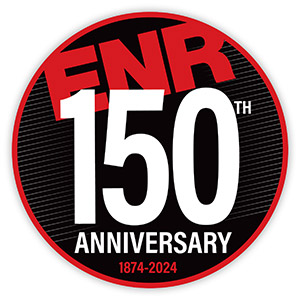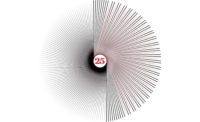
More art than science, earthwork engineering relied heavily on local custom in 1904 when Karl Terzaghi earned an engineering degree in Austria. After supervising a dam project in Croatia and studying others in the U.S., he concluded that the study of soil mechanics had stagnated.
“The reason for this lack of progress lies mainly in the great difficulty of investigation of soil phenomena,” Terzaghi later wrote. He devoted the rest of his career to rigorously investigating the physical study of soils and soil behavior.
“Terzaghi is easily the greatest contributor to geotechnical engineering over the past century,” says says David P. Sauls, chairman of GeoEngineers Inc.
While teaching at the Royal Ottoman College of Engineering in Istanbul in 1919, he began publishing his findings. His first book, The Mechanics of Earth Construction Based on Soil Physics, was issued in 1924.
ENR first published a paper by Terzaghi in 1920. At that time, ENR Associate Editor Fred Schmitt found Terzaghi’s ideas to be so significant that he advised him to send in reports of his further studies and findings. They were published as a series of eight articles in 1925.
As Schmitt explained in the series, Terzaghi "was able to trace the many physical properties of soils to four underlying factors: 1. Friction between the grain surfaces; 2. Viscosity of the capillary water; 3. Surface tension of the capillary water; and 4. The influence of the width of voids on the physical properties of the water itself.” The series constituted the first comprehensive treatment of soil mechanics principles read by English-speaking engineers.
Practical application of the theories propounded by Terzaghi soon began in the U.S. Early in the 1930s, the Los Angeles Bureau of Waterworks and Supply began applying the factors to the compaction of soils in large earth dams. The outcome was the development of an entirely new procedure for engineering control of such work. Included were simple tests for determining the suitability of materials for earth dams and for checking compaction.
“Terzaghi established not only the technical basis for analyzing soil behavior responses to constructed facilities, but established the gold standard for the role geotechnical engineers perform that endures today,” says Sauls. “He saw the whole problem, beginning with site geology and ending with the ground’s measured behavior during and after construction.”
After teaching for several years in the 1920s at M.I.T., Terzaghi returned to Vienna before settling permanently in the U.S. in 1938 and teaching at Harvard University. He published prolifically and consulted widely on projects including the Aswan High Dam, subsidence in Mexico City, Chicago subway tunnels and the 10-in. settlement of Charity Hospital in New Orleans. “His consulting engineering reports read as interesting stories that design and explain the solutions to the world’s most complex construction projects over the next 30 years,” notes Sauls.
Many of the analytic approaches that Terzaghi developed are still valid. “We’ve refined the numerical analysis techniques and improved the design input data with superior soil sampling and laboratory testing methods,” says Sauls. “His work established our understanding of such subjects as: mathematical formulation of soil mechanics to analyze soil performance; settlement of foundation soil under applied load; earth pressures; tunneling, landslides, dams and slope stability.”






Post a comment to this article
Report Abusive Comment